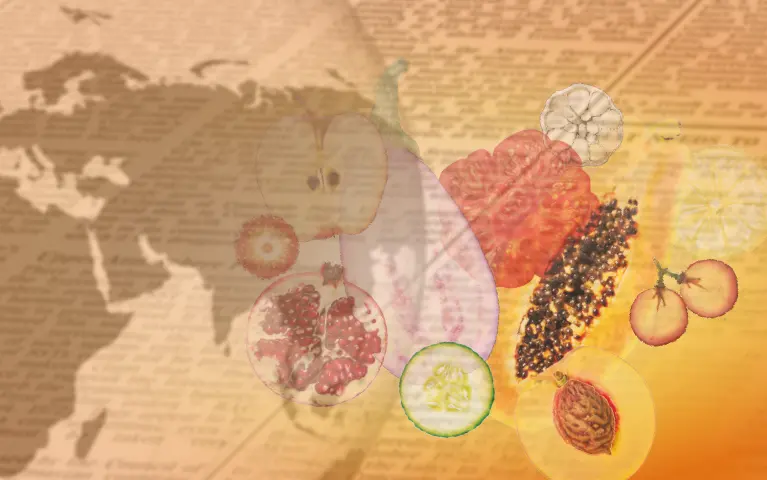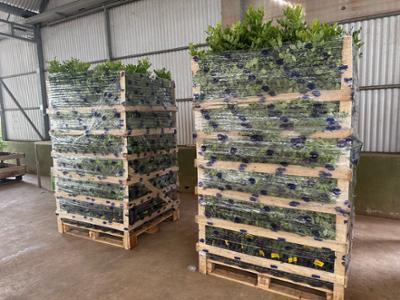

VIVEROS HERNANDORENA leads the modernisation of traditional carob tree cultivation to intensive irrigation.
For more than a decade, Viveros Hernandorena has been developing an ambitious R&D research project, in collaboration with the Asociación Empresas Innovadoras de la Garrofa (EiG), focused on improving the quality of carob plants and the transformation of traditional cultivation to intensive irrigation.
Spain is the world's leading producer and exporter of carob, mainly in pulp and locust bean gum, with an annual volume of between 60,000 and 80,000 tonnes of whole fruit and a surface area of 45,000 ha. The crop is mainly concentrated in the Valencia Region, the Balearic Islands and Catalonia, where the mild climate favours the well-being of this rustic crop, whose ageing, rain-fed plantations are giving way to new, more productive plantations with more efficient densities, achieving increasing profitability.
In a context of high demand for the valuation of products and by-products derived from carob, there is a shortage of carob on the market due to the progressive decrease in productive surface area over the last two decades, as a result of the grubbing up of plantations, competition from other more profitable crops and the advance of construction in coastal areas.
More than 10 years of research
Viveros Hernandorena's commitment to the carob tree goes back a long way, anticipating the demands of producers, industry and consumers. In 2011, this nursery started up an experimental R&D project dedicated to the global improvement of this crop, in collaboration with the Association of Innovative Carob Tree Companies (EiG). ‘As a result of this alliance and our know-how, we have achieved significant improvements, both in the multiplication of trees grafted in the nursery and in the yields of new plantations. We are transforming the cultivation of carob from traditional dry farming to more efficient intensive irrigation,’ says Rosa Hernandorena, commercial director of Viveros Hernandorena.
Quality and crop management
Viveros Hernandorena manages the multiplication of carob trees with excellence, making an exhaustive pre-selection of the best plants at each stage of growth and crop management to guarantee the highest standards of the final product. The plants are grown in 1.5 litre pots, with a rojal selection seedling rootstock, the most homogeneous in vigour, implementing grafting and tutoring to obtain the highest productivity and efficiency.
The female varieties, Duraió and SDC, the most common in the Spanish Levante region, have greater vigour and high levels of production over time. The hermaphrodite varieties used are 13P, 14P and Turís, pollinators of medium vigour and also productive, with yields ranging between 14 and 18%. At sowing time, planting is recommended after summer, between September and October, to optimise the results in terms of plant grip and root development.
Another important achievement is the earlier entry into production of the trees. While a traditional carob tree takes between eight and ten years to become productive, thanks to the new plant materials and management, Hernandorena has managed to develop trees that bear their first fruit after three years. ‘With these improvements, from obtaining between 3,000 and 4,000 kilos/ha, we aim to reach a minimum of 15,000 kilos/ha’, say the nursery, assuring that ‘the greater productivity will lead to higher profitability in the plantations’.
In the field, the vast majority of carob plantations are characterised by their hardiness, with good adaptability to all types of soil, low incidence of pests and low costs.
A competitive advantage of this rustic and eco-sustainable crop lies in its low water requirements, adapting well to drought and changing climatic conditions. According to Viveros Hernandorena, ‘this crop has enormous potential for areas where, due to drought, low profitability of other crops or the incidence of pests, they are running out of agronomic options’.
Leaders in a minority crop
Thanks to their innovative approach, Viveros Hernandorena are true experts in this crop. They produce 80,000 rootstocks per year, from which they obtain more than 40,000 carob plants marketed. Their growth in this segment has been exponential in the last decade.
Grafted Carob Tree Plants
Viveros Hernandorena will occupy stand 3E09 at Fruit Atttraction.
www.hernandorena.com






